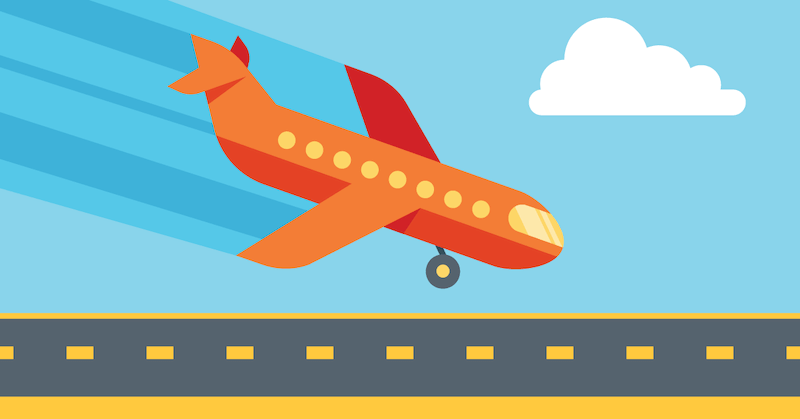Why landing pages are important to marketing

Landing pages are important to marketing. In fact, landing pages are one of the most critical elements of a digital marketing campaign. This article explores what a landing page is, different types of landing pages, landing page best practices, and answers real questions we’ve received about landing pages.
What is a landing page?

The one thing could be anything like signing up for your email list, registering for a webinar, making a purchase, or downloading an eBook. Does creating landing pages sound daunting? You aren’t alone. Marketo reports that getting landing pages built and tested is a top-five challenge for B2B marketers. Let’s dig in by starting with the types of landing pages there are.
Landing pages come in several flavors.
- Lead generation-focused landing pages typically offer items like eBooks, free trials, webinar registrations, or other valuable content in exchange for some contact information from the visitor. Lead Gen landing pages must convince visitors that the item being offered is worth the exchange of personal details. When potential customers are evaluating offerings, Lead Gen pages can help move them to intent. Lead Gen forms can be longer and more detailed than other types of landing page forms.
- Click-through landing pages lead visitors to other pages. This might be your social media accounts if you’re looking to increase followers/share content, or directly to your e-commerce site to make a purchase. These landing pages have a bold call to action but do not typically have forms.
- Squeeze landing pages are short, to the point, and have a limited form, usually only asking for an email address. Used primarily at the top of the funnel, a good squeeze page leaves no doubt about what the visitor gets for their email address, and it must deliver on its promise immediately.
- Microsites are a collection of pages. A microsite should be singularly focused on a specific product or service that requires more explanation. It should also be separate from your main website.
%
Companies with 10-15 landing pages increase leads by 55%. - Hubspot
Landing page best practices
You’ve seen how landing pages are important to marketing. Now, let’s review some best practices for landing pages.

-
Landing pages should have a singular focus.
- A singular focus will drive one particular action from the visitor. A landing page that tries to do too much will fall short of its goal. Stay focused on that particular action.
-
Keep the layout simple.
- Avoid confusion for users. Most times, this means removing your site menu on a landing page. If the job of the landing page is to secure an email address, why would you want to send them over to an About the Team page? People can be easily distracted, so remove the distractions.
-
Present a clear call to action (CTA).
- Never leave a doubt in the mind of the visitor about what you want them to do. If you want them to enter an email address, ask boldly and clearly. Always try to place your CTA above the fold, so a desktop user would not have to scroll to see the CTA. A personalized CTA converts 202% better than a normal CTA – Hubspot
-
Be sure your landing pages matches your ad.
- Use the same visuals, colors, and language on your landing page that your ad uses. If your ad is mostly red, use red on the landing page. If there is a picture of tulips on your ad, use the same picture on your landing page (at least at the top). If you have a text ad that says FREE Gardening eBook, don’t call it a Flower Planting Guide on your landing page. Build trust with the visitor by staying consistent.
-
Always deliver on your promise, immediately.
- No one wants to feel like the victim of a bait and switch. If your ad convinces the visitor to click for a free gardening eBook download, your landing page should be a free gardening eBook download. It should most certainly not be a 5-paragraph explanation of why you’re the best for-hire gardener in the tri-state area with a link to the eBook at the bottom of the page. Give them what they came for. Follow up with exposition.
-
Balance content with information requests.
- The value of the content you deliver in exchange for visitor information must be balanced. Someone subscribing to your mailing list shouldn’t be filling out a 6-field form, just as someone downloading a high-value worksheet should provide more information than just their email.
Questions about landing pages
Does my campaign really need a landing page?
In short – yes. Every campaign should have at least one landing page. Some campaigns may require several landing pages, especially if the campaign is using varying creatives and messages. Here’s an example.
Big Pet Shop is having a pet food sale for dogs and cats. They run some display ads with dogs and some with cats with specific messaging for each type of pet. Suppose you’re a cat owner. You see a cat ad with an amazing deal on cat food. You click. The landing page is filled with dog pictures and dog food is at the top. This doesn’t exactly inspire confidence that you are in the right place. How could Big Pet Shop do better? Here are a few suggestions.
- Be less specific with their ads and create a single landing page to match. The message could be Pet Food Sale, not Cat Food Sale. The visitor still has an additional click or two to get the promise, but they do know they are in the right place.
- Have a specific landing page for Dog Food Sale and one for Cat Food Sale. These landing pages could match the advertisements, deliver immediately on the sale promise, and have a few select links to other dog or cat content/products. Big Pet Shop is building trust and confidence with this approach.
What should a landing page include?
While every landing page is unique, there are some common elements you should always try to include.
- Your unique selling proposition (USP). – What makes your offer different and better than the competition? Craft your USP into a headline and supporting text. Keep it simple and short. Big Pet Shop crafted a USP for their pet food sale: Healthy for your pet, healthy for your wallet.
- The hero image. The first thing that will catch the eye of the visitor, your hero image (or video) should be bold and show your product or service in context. If you’re Big Pet Shop, this could be a happy pet next to a bowl of your food. If you’re a web developer, it might be a collage of your best work. If you can use real people and get an emotional response from the visitor, that may add credibility to your page. In general, avoid using cheesy stock photography, as it won’t feel authentic.
- Show off your features and benefits. A feature is something your product or service is, and a benefit is what it does for the customer. Good landing pages have both working together. Big Pet Shop’s food is made from all-natural ingredients and affordably priced. Those are features. Big Pet Shop’s food will improve the health of your pet and save you money. Those are benefits.
- Social Proof. Nothing is more powerful than the influence of other people. Look no further than any current trend. The reason it’s a trend is that people saw other people engaging in that trend and jumped in the conga line. Do you have customers who love what you do? Get testimonials or reviews. Do you work with other companies? Use their logos and names. Include social proof – just ensure it’s legitimate. Fake reviews and testimonials will ruin your reputation faster than just about anything else.
- Your CTA. Your site visitors are here for a reason. Remind them with your CTA. Make it big, make it bold. Use conversational language that conveys exactly what a visitor will be getting. Instead of a generic CTA like Click Here, try something like – Save 50% Now, Start Your Free Trial, or Get Our Newsletter.
How do I build a landing page?
There are several methods for building a landing page. The exact method you use depends on your website platform and your level of expertise. Here are 3 options.
- Use a landing page service. Several specialized services allow people with little to no web development experience building landing pages. Typically, these services have a monthly fee to keep your landing page active and allot a certain number of pages and conversions for your tier. Prices range from $30 to $300 per month. In most cases, landing pages built with these services do not appear on your website but reside at the service URL or a subdomain like yourpage.serviceurl.com.
- Build it yourself. If you’re handy with HTML, CSS, and JavaScript, chances are you can build a landing page yourself. Many web platforms make it simple to add new pages. Where people tend to struggle is when it comes to where the page lives in the website hierarchy and technical issues such as removing menus. This is where a marketing agency comes in handy. There is usually no cost associated with this DIY approach, just your time.
- Ask your marketing agency. Many agencies, such as Media Place Partners, have experts on staff that can help you build a landing page. There is no one better suited to assist you than the team that is managing and optimizing your campaigns. Pricing will vary based on the platform you’re using and your specific needs.
Now that you know more about landing pages and why landing pages are important to marketing, it’s time to put them to use in your next campaign. How exactly will you implement landing pages? Media Place Partners can help. Contact us today and to improve your conversion rates with landing pages. Whether you want to use a service or build it yourself, our team of experts is ready to assist you.


